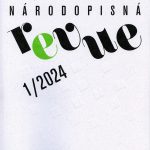
The study explains the birth of the term ‚folk art‘ in the Hungarian context. In Central Europe, the interest in the culture of the people, i.e. peasants, was connected with the emergence of the idea of nation-states. Towards the end of the 19th century, an evolutionary approach became authoritative in both history and social history. The emerging ethnology also followed this direction. In the simple object forms of peasant culture, it could find documents from old historical periods. At the end of the 19th century, home industry movements emerged. On the one hand, the goal was the production of industrial goods that did not require capital, but meant the use of folk knowledge. Recognizing the possibilities, the state supported the education of house industries and its application in the applied arts for decades. This produced results such as Hungarian Art Nouveau and later Art Deco. At the end of the 19th century, research on ornamentation appreciated the decorations of objects used by peasant. The result was the birth of the term ‚folk art‘, which is a value category without concrete content.
This article presents the way in which fashion designer Dobrila Vasiljević Smiljanić (Serbia), using the elements of traditional thesaurus of Western Serbia, created the fashion brand Sirogojno style, recognizable on the Yugoslav and international markets during the second half of the twentieth century. The features of the analyzed parameters – material used in production, colouring, design techniques, techniques in decorating, ornaments and models – showed that the visual identity of unique handicrafts was relied on tradition, i.e. inherited / transmitted heritage / knowledge in its greatest part. Namely, in her works, the creator Dobrila Vasiljević Smiljanić skilfully synthesizes two seemingly completely different / distant concepts – tradition and fashion – creating a unique products on the fashion market. Application of original (local) heritage (traditional manufacturing of garments, their ornamentation and colors) into a fashion form (dressed models) was so successful that it made Sirogojno knitwears as a base / standard for the definition of ethno fashion as such.
Souvenirs largely contribute to promoting the attractiveness, history and culture of a tourist destination. The study presents an analysis of results of a research probe that mapped the use of elements of traditional folk culture, using the example of souvenirs offered in special sales places in two of the most visited tourist destinations in Slovakia – Bratislava and the High Tatras. It views the phenomenon of souvenirs through the prism of anthropology of tourism and visual arts folklorism. The analysis of materials from the field research is based on a theoretical framework with three stages of folklore work’s stylisation (Leng 1963) and the theory of geographically displaced authenticity (Hashimoto – Telfer 2007). Interviews with souvenir sellers reflect a certain tension between the idea of offering souvenirs linked to traditional Slovak traditional culture and the globalised demands of tourists.
The study focuses on various aspects of the use of the motives from the rural environment in the fine art in region of Upper Hungary during the 19th century. Important source of those motives, quite often in the context of national representation, was the folk culture. The most common contribution to its depiction was the folk clothing, which identified regions rather than objects of daily need. Motives from folk environment are represented at the examples from fine arts, as illustrations or so-called Trachtenbücher or Trachtenblätter (depictions of figures in folk dress), then romantic depictions (applied especially at the work of Jozef Czauczik and Peter Michal Bohúň), and nevertheless foreign rural subjects (Italian and Dalmatian countryside) and their popularity in genre painting. The second half of the 19th century is associated with the adaptation of motives from the folk environment in realism and naturalism, in salon painting and at exhibition presentations, selected examples of folk art manifestations that captured the interest of the time and had an aesthetic effect on society. Even after 1900, the trend of grasping the monitored issue in the intensions of the development of modern art continued. Several artists remained interested in capturing the Slovak landscape and people.
Shifting Tradition
Folklore and Tradition in Contemporary Art (Petra Mazáčová)
Interview
Dance Your Life Away... Interview with jubilant Daniela Stavělová (Martina Pavlicová)
Jubilees and Obituaries
Congratulations to Alena Jeřábková (Helena Beránková – Lenka Nováková)
Birthday Greetings to Naďa Valášková (Stanislav Brouček)
News
25 years of National Minority Studies at the Research Centre of European Ethnology in Komárom (Petr Lozoviuk)
Dance Analysis Course in Trondheim (Lucia Franická Macková)
Exhibitions
Five Exhibitions of Paintings on the Anniversary of Ludvík Kuba (Jaroslav Kuba)
"150 Years of the Dream of a Museum" at the Cheb Museum (Marta Ulrychová)
Folk Piety at the Stiftland Museum in Waldsassen, Upper Palatinate (Marta Ulrychová)
Conferences
4th Symposium of the ICTM Study Group on Music and Dance of the Slavic World (Prague 2023) (Matúš Ivan)
Reviews
J. Škabrada: A Concise Development of Village and Field Patterns in Bohemia (Roman Malach)
Houses and Their Inhabitants. A book edition dedicated to the history of Veselí nad Moravou (Helena Beránková)
Christmas Stories. The Harafica Cimbalom Band and Guests. CD + songbook (Jiří Čevela)
10394
10393
10392
10391
10390